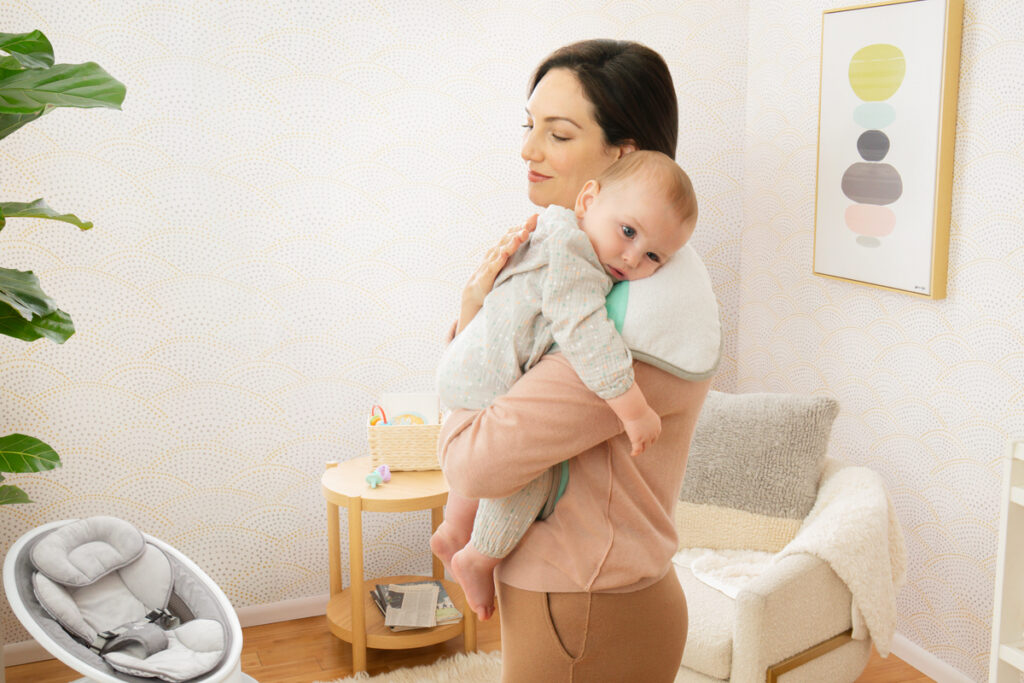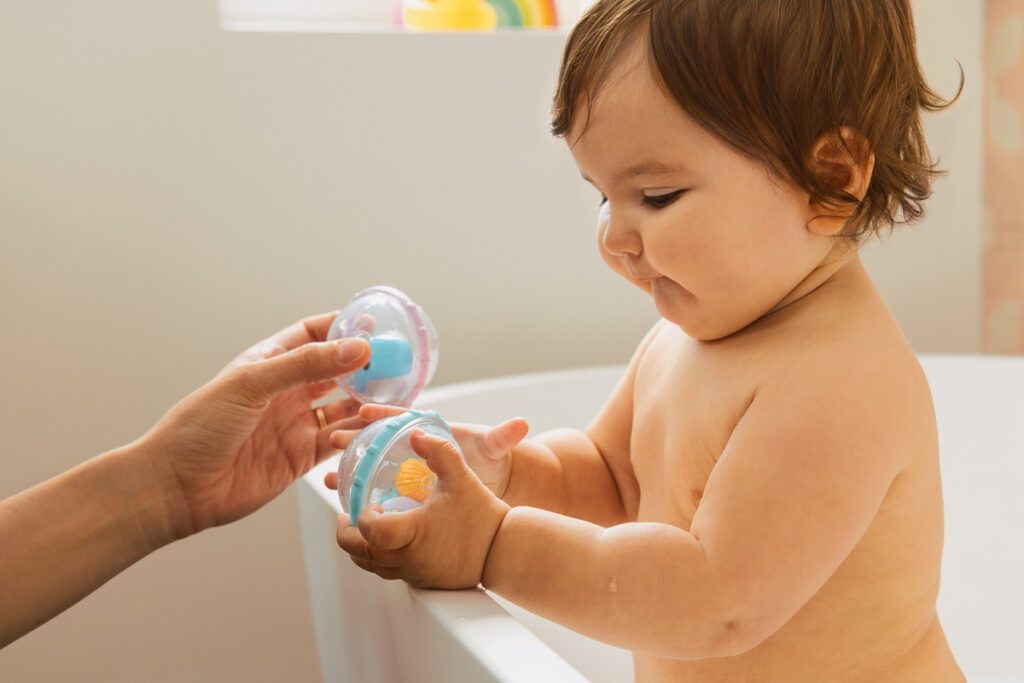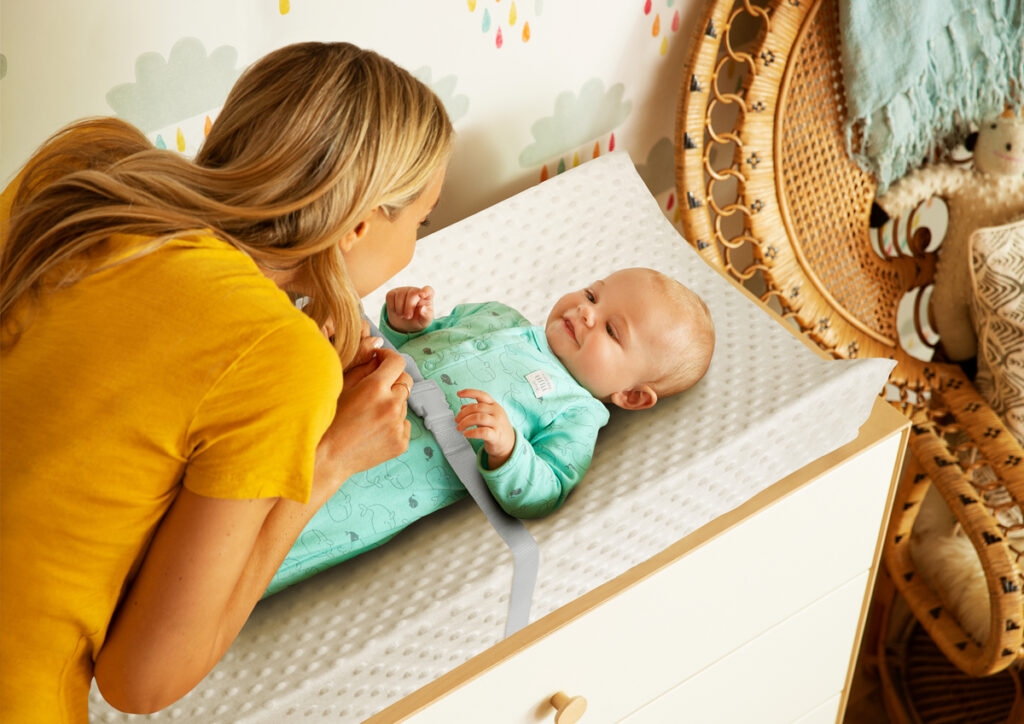Sitting up, smiling and crawling are all indications that your baby is growing and developing. Your baby's vision has stages of development too, but usually there are no obvious signs to help
determine whether this development is taking place properly.
The first year of life is one of the most critical stages in childhood development. Vision is a key process in the growth, development and daily performance of children. Public health experts agree that visual development is most dramatic between six and 12 months of age and that early detection of vision problems can prevent and help reduce the threat of serious vision impairments. In fact, one in every 10 children is at risk from undiagnosed eye and vision problems. That is why the Canadian Association of Optometrists encourages parents to include an optometrist trip in the list of well-baby checkups.
Assessments between six and 12 months of age can determine healthy development of vision. Early detection and treatment of eye health and vision problems are the best ways for a parent to ensure that their child has healthy vision for successful development – from childhood to adulthood.
At a young age, your child will be learning:
Eye teaming – the ability of the eyes to work together.
Eye focusing – the ability of the eyes to focus clearly at different distances quickly, accurately and for sustained periods of time.
Eye motility/tracking – the ability of the eyes to smoothly follow moving objects and to move accurately from one object to another.
SEEING THE DOC
Typically, on a first visit to the optometrist, a child will sit on his parent’s lap during the assessment and the optometrist will use lights and other hand-held instruments to check that the eyes are working together and that there are no significant refractive issues that will impede proper vision development. The optometrist may also use drops or a spray to dilate the baby’s pupils to ensure the health of the eye.
Eye exams should become part of your child's regular check-up routine. Pediatricians, family physicians and nurses all provide an important base-level eye screening that is designed to detect gross eye abnormalities. A comprehensive eye assessment by an optometrist is designed to detect much more and is a vital part of your well-baby care.
It is important for parents to know that even through your youngster appears to be able to see even the smallest of objects in the distance, vision skill does not mean that your child has healthy eyes. Although problems are not common, it is important to identify children who have specific risk factors at this stage.
TESTING THE EYES
Your child doesn't have to read an eye chart in order to have an accurate and complete eye examination to be performed. In fact, your optometrist will test for excessive or unequal amounts of nearsightedness, farsightedness or astigmatism, eye movement ability, and eye health problems, all in a way that will make you and your baby feel comfortable and at ease.
The best news is that with early detection and treatment, many vision problems are reversible and often preventable.
MAKE THE FIRST APPOINTMENT GO SMOOTHLY
- Work around fussy times. You know your baby best; schedule your appointment at a time when your baby is generally relaxed and happy.
- Ask to have any required paperwork sent to you before the appointment so it can be filled out at home, ahead of the doctor's visit.
- Pat yourself on the back for knowing how vital this first eye exam is and for getting yourself out the door to make it there on time!
Guide to Good Vision
Visual acuity: Visual acuity is the ability to see objects appropriate for your child’s age. I t can be measured by your optometrist long before your child can read or recognize letters.
Eye health: Eye disease can impair vision or lead to vision loss if not diagnosed and treated. Most conditions can be treated best if caught early.
Visual integration: The ability to process and integrate visual information, which includes and coordinates input from our other senses and previous experiences so that we can understand what we see. The eye-hand coordination involved in tossing a ball or a game of patty-cake requires a great deal of teamwork between the senses.
Dr. Dorrie Morrow, OD, has been a practising optometrist for 28 years, is past president of the Canadian Association of Optometrists and is chair of the CAO's Children's Vision Initiative.














